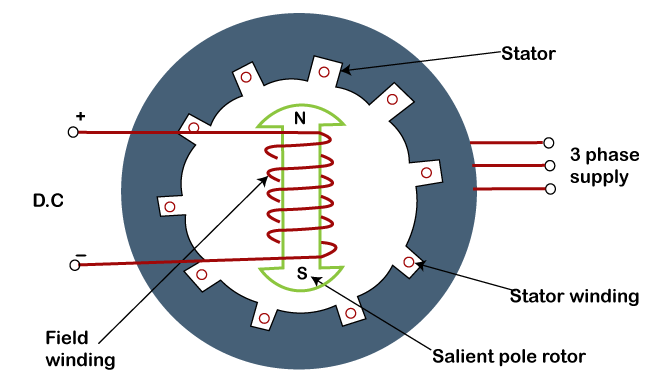Here’s a comprehensive explanation of hunting in synchronous motors, incorporating images for clarity:
What is Hunting?
- In a synchronous motor, hunting refers to an undesirable phenomenon where the motor’s rotor speed oscillates or fluctuates around its synchronous speed (the speed at which it should ideally rotate).
- This oscillation can cause mechanical vibrations, noise, and potential damage to the motor if not controlled.
Causes of Hunting:
-
Sudden Load Changes: When the load on the motor suddenly increases or decreases, the rotor initially lags or accelerates, respectively, before adjusting to the new equilibrium position. This transient behavior can lead to hunting.
-
Inertia of the Rotor: The rotor’s inertia resists sudden changes in speed. If the load changes abruptly, the rotor’s momentum can cause it to overshoot or undershoot the new synchronous speed, resulting in hunting.
-
Weak Damping Torque: Synchronous motors inherently have low damping torque, which is the torque that opposes oscillations. This makes them more prone to hunting compared to other motor types.

Effects of Hunting:
- Mechanical Vibration: Hunting can cause significant vibrations in the motor and connected machinery, leading to wear and tear and potential damage.
- Noise: The oscillations can create undesirable noise levels.
- Loss of Synchronization: Severe hunting can cause the motor to lose synchronization with the power supply, leading to instability and potential tripping of protective devices.
Methods to Reduce Hunting:
-
Damper Windings: These are copper bars embedded in the rotor’s pole faces. They act like short-circuited squirrel cage windings, inducing currents that oppose the oscillations and provide damping torque.
-
-
Flywheel: A flywheel attached to the motor’s shaft can increase its inertia, making it more resistant to sudden changes in speed and reducing hunting.
-
Load Equalization: Minimizing abrupt load changes can help prevent hunting.
-
Advanced Control Systems: Modern control systems can monitor the motor’s speed and adjust the excitation current or field voltage to quickly damp out oscillations and maintain stability.
By understanding the causes and effects of hunting, and implementing appropriate measures, synchronous motors can operate reliably and efficiently within their intended applications.
-
